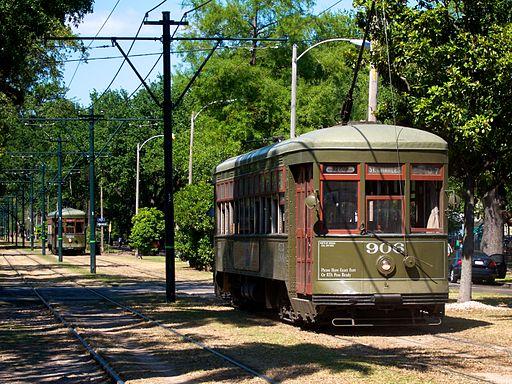The Right Way To Run A Trolley
NEW ORLEANS - This quaint old city tells you why Fort Lauderdale was right in nixing the downtown trolley idea. New Orleans has trolleys, and the oldest ones are pushing 100 years old, which is older than the average South Florida winter resident. Trolleys older than the ones I rode as a kid in Philadelphia—and they were old then—are still heavily used by locals and tourists alike. They are the equivalent of San Francisco's cable cars; riding one is a must for visitors.
The reason trolleys survive and thrive here is illustrated above. The city's broad Canal Street has medians wide enough to permit two tracks, so even though the trolleys are slow, they can keep pace with cars on both flanks. And once the trolleys escape the heart of downtown, they still have their own rights of way and move along at a reasonable pace.
They most famous line is St. Charles where the old vehicles rattle along a grass median, shaded by ancient oaks, sometimes reaching the breathtaking speed of 25 miles per hour. In good weather, the windows are open and signs warn against sticking your head out. Branches are often inches away, sometimes even brushing the sides of the cars.
One reason the old trolleys have endured (some built in the 1920s) is because they are one of the best ways to see the city. The St. Charles line is spectacular, passing through blocks of large ornate old homes and apartments before reaching the impressive campuses of Tulane and Loyola universities. In that respect, the 1920s pace is an asset. Gawkers have plenty of time to enjoy the view. One fare takes you to the end of the line and back. They run about 10 minutes apart, so if you miss one—or it is too crowded as it often is in the downtown section—there is usually another visible down the track.
Fort Lauderdale's proposed trolley, while 100 years more modern, was antiquated in the most important sense. It had no dedicated right of way. Had Fort Lauderdale planners been willing to sacrifice a lane of traffic on some of the broader, busier streets, it would have been a different story. But the times made that impossible. New Orleans transit planners were well ahead of Henry Ford. Horses pulled their original trolleys—in 1835.

Secondary image via
